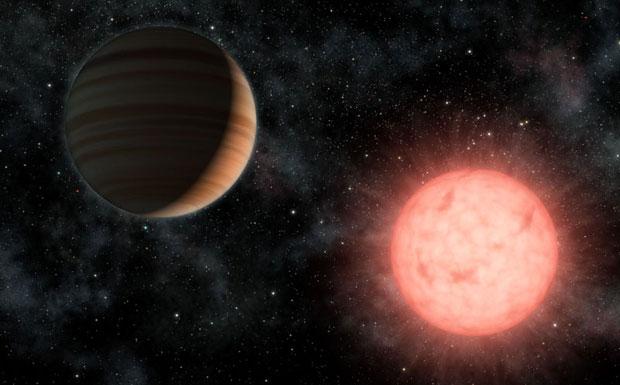One young star may yank another's developing solar system, a new theory suggests, accounting for planets that circle their stars on tilted paths. This idea may also explain a long-standing puzzle close to home: why Earth's orbit is tipped 7° relative to the sun's equator.
In 1995, Swiss astronomers made the shocking discovery of the first "hot Jupiter," a gas giant circling close to its star. To explain the odd find, theorists proposed that the planet formed far from its star but then migrated closer, spiraling through the protoplanetary disk of gas and dust that once swirled around its sun. During this so-called disk migration, the planet remained in the disk, and so the tilt of its orbit matched that of its star.
But the disk migration theory suffered a blow in 2008, when astronomers began finding hot Jupiters on tilted and even backward orbits. Such wayward planets seemed to be victims of violence: The gravitational force of other planets might have kicked them onto their peculiar paths.
Now astronomer Konstantin Batygin of the Harvard-Smithsonian Center for Astrophysics in Cambridge, Massachusetts, says it's time to give peace a chance. "Misaligned orbits are actually a natural outcome of disk migration—once you take into account the fact that planetary systems are usually born in multistellar environments," he says, noting that many stars have stellar companions. In work appearing online today in Nature, Batygin calculates how a young star's protoplanetary disk gets torqued by a second star orbiting the first. When a giant planet spirals inward through this tilted disk, it ends up on a path that's out of whack with its sun's equator.
"I think it's an entirely plausible idea," says Josh Winn, an astronomer at the Massachusetts Institute of Technology in Cambridge who has measured orbital tilts of several hot Jupiters. "The best thing about it is we can test it." If Batygin is right, Winn says, then misalignments should be just as common in solar systems that lack hot Jupiters, because tilting a disk doesn't require the presence of a hot Jupiter. So far, NASA's Kepler spacecraft has measured the tilt of just one multiplanet system: the three planets around Kepler 30, all of which have orbits that line up with their star's equator. In the future, Winn plans to observe additional multiplanet systems and put Batygin's theory to the test.
One other multiplanet solar system has a known tilt: our own. "I think somewhere in the Milky Way, there's a star that's responsible for tilting us," Batygin says. He suspects the sun once had a companion star that tipped the solar nebula by 7°, then fled the scene after the planets arose.
By Ken Croswell
source
SILENT OBSERVER:

No comments:
Post a Comment